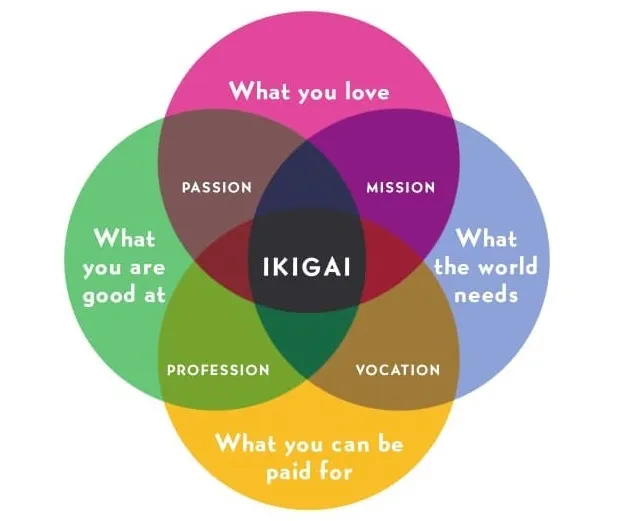Ikigai, flow and longevity: what the Japanese can teach the world
In an era of urban stress and social media distraction, Ikigai sheds light on the importance of focus, social ties, a healthy lifestyle, and a larger sense of purpose.

Japan is known for its contribution to disciplines, ranging from design and automobile manufacturing to knowledge management and culinary craft. In their book, Ikigai: The Japanese Secret to a Long and Happy Life, Hector Garcia and Francesc Miralles show how Okinawa islanders can also teach us a lot about longevity.
Héctor García is a citizen of Japan, where he has lived for over a decade, and of Spain, where he was born. A former software engineer, he worked at CERN in Switzerland before moving to Japan, where he developed voice recognition software. He blogs at kirainet.com and is the author of A Geek in Japan. Francesc Miralles was born in Barcelona and is the author of the novel Love in Lowercase.
A number of studies have focused on the lifestyles of centenarians from Okinawa and other ‘Blue Zones’ of the world where people live the longest, such as Sardinia, Loma Linda, Nicoya and Ikaria. They also suffer from fewer chronic illnesses and enjoy high levels of vitality.
The compact 194-page book ties together a number of inter-disciplinary concepts and makes for an easy read, but readers looking for more rigour or depth should look elsewhere. Here are my five key takeaways from the book; see also my review of the kaizen management book here.
1. Ikigai
Ikgai translates into “the happiness of always being busy.” As shown in the Venn diagram above, this “existential fuel” lies at the intersection of what you love, what you are good at, what you can be paid for, and what the world needs. It is unique for everyone and can change in the course of life.
In that sense, ikigai is much more than a passion or profession. This framework would make for a great discussion on topics like social entrepreneurship, and it would have been useful for the authors to include such an analysis.
If one has a sense of purpose in life, the concept of retirement does not matter. The authors draw on research into logotherapy (discovering purpose) which focuses on the future, spirituality and reframing current contexts.
Perspectives can be reset by examining the present from a future state and contrasting the present context with worst-case scenarios. It is important to accept feelings of anxiety, fear, or worry; however, one should not succumb to them or even try to eliminate them.
2. Mindset
People who live the longest have a positive attitude and a high degree of emotional awareness. They can manage their emotions during times of setbacks. Meditation “slows down the centrifuge” of the mind. Mindfulness increases peace of mind and helps appreciate the more important as well as the finer aspects of life.
While a low level of pressure and occasional stress may be beneficial, continuous stress is physically harmful and can cause fatigue, depression, irritability, insomnia, and anxiety. A strong sense of humour and smiling at people (even strangers) help as well.
Stoicism helps control distractions of pleasure and desire, through balance rather than elimination. A strong sense of resilience helps overcome hurdles and also be flexible to adapt and switch tactics. The authors cite Reinhold Niebuhr’s Serenity Prayer in this regard (acknowledging what can’t be changed).
“Anti-fragility” (as explained by Nassim Nicholas Taleb) can be built by creating redundancies (eg. multiple revenue streams; friendships outside relationships), spreading bets, and reducing fragility (eg. avoiding toxic people, reducing digital distraction).

3. Flow
Psychologist Mihaly Csikszentmihalyi defines the concept of flow as “the state in which people are so involved in an activity that nothing else seems to matter; the experience itself is so enjoyable that people will do it at great cost, for the sheer sake of doing it.”
A sufficient level of challenge sustains the immersive power of flow; too much leads to anxiety, too little leads to boredom. Taking small steps at a time and cultivating a habit of discipline helps get past inertia blocks into the zone of flow.
A strong ability to focus and concentrate is called for to sustain flow; unplugging from digital media (“technology fasting”) helps here. Too much multi-tasking and interruption can lead to mistakes, wastage of time, reduced productivity, exhaustion, feeling of loss of control, less creativity, and inability to remember what was done.
The authors observe that Japanese professionals are renowned for their perseverance (even obsession) and absorption in their tasks, with a thorough attention to detail. “The people of Japan have a unique talent for creating new technologies while preserving artisanal traditions and techniques,” they explain.
Steve Jobs himself was a big fan of Japanese design in porcelain and electronics, eg. artisan Yukio Shakunaga. The spirit of “sophisticated simplicity” (in contrast to “lazy simplicity”) is visible in Japanese art, engineering and cuisine. “The Japanese are skilled at bringing nature and technology together; not man versus nature, but rather a union of the two,” the authors explain.
It is also important to protect one’s space and time to harness ikigai; a certain level of privacy and even reclusiveness is evident among many successful people. Routine activities and mundane tasks have an associated “microflow” – for example, Bill Gates says he enjoys washing the dishes at night since it relaxes and clears his mind.
Rituals also have their own aspects of flow and help break down big goals into sub-parts. “The happiest people in the world are not the ones who achieve the most. They are the ones who spend more time than others in a state of flow,” the authors explain.
4. Insights from the longest-living people
Two chapters provide insights from fascinating interviews with people over a hundred years old, such as “Have a tremendous thirst for life” (Misao Okawa, 117); “I’ve never eaten meat in my life” (Maria Capovilla, 116); “I see badly, I hear badly, and I feel bad, but everything’s fine” (Jeanne Clement, 122); “Keep your mind and body busy” (Walter Breuning, 114) and “I haven’t died yet” (Alexander Imich, 111).
The people of Okinawa have a strong sense of community, and celebrate the rituals of life. The authors also advise playing with pets or children, as well as sufficient sporting activity, exposure to the sun, and adequate sleep.
The 100 interviewed residents of Okinawa share a number of lessons: spend time with people, nurture friendships, cultivate a garden, do regular exercise, have tea together, slow down, enjoy the little things, be optimistic, do volunteer work, and indulge in laughter, song and dance.
Other inferences drawn by the authors include: be passionate about what you do, even if it may seem insignificant; have a purpose or even several purposes; and celebrate little things.
5. Food and exercise
Too much sitting is bad for muscular and respiratory fitness; regular activity in small doses is important, and this need not include heavy gym activity. Healthy habits include eating only until the belly is about 80 percent full and eating a diverse variety of vegetables, especially anti-oxidants.
The “Okinawa diet” includes at least five servings of fruits and vegetables each day, of at least seven types. Typical items include tofu, miso, bitter melon, seaweed, soy sprouts, peppers and green tea.
One chapter covers Eastern disciplines to bring together “body, mind and soul,” such as movement, postures and breath in yoga (India), qigong and tai chi (China), and shiatsu (Japan).
In sum, the authors provide 10 rules distilled from their research in the book: stay active, don’t retire; take it slow; eat healthy; surround yourself with friends; get in shape; smile; connect with nature; give gratitude each day; live in the moment; and follow your ikigai.







